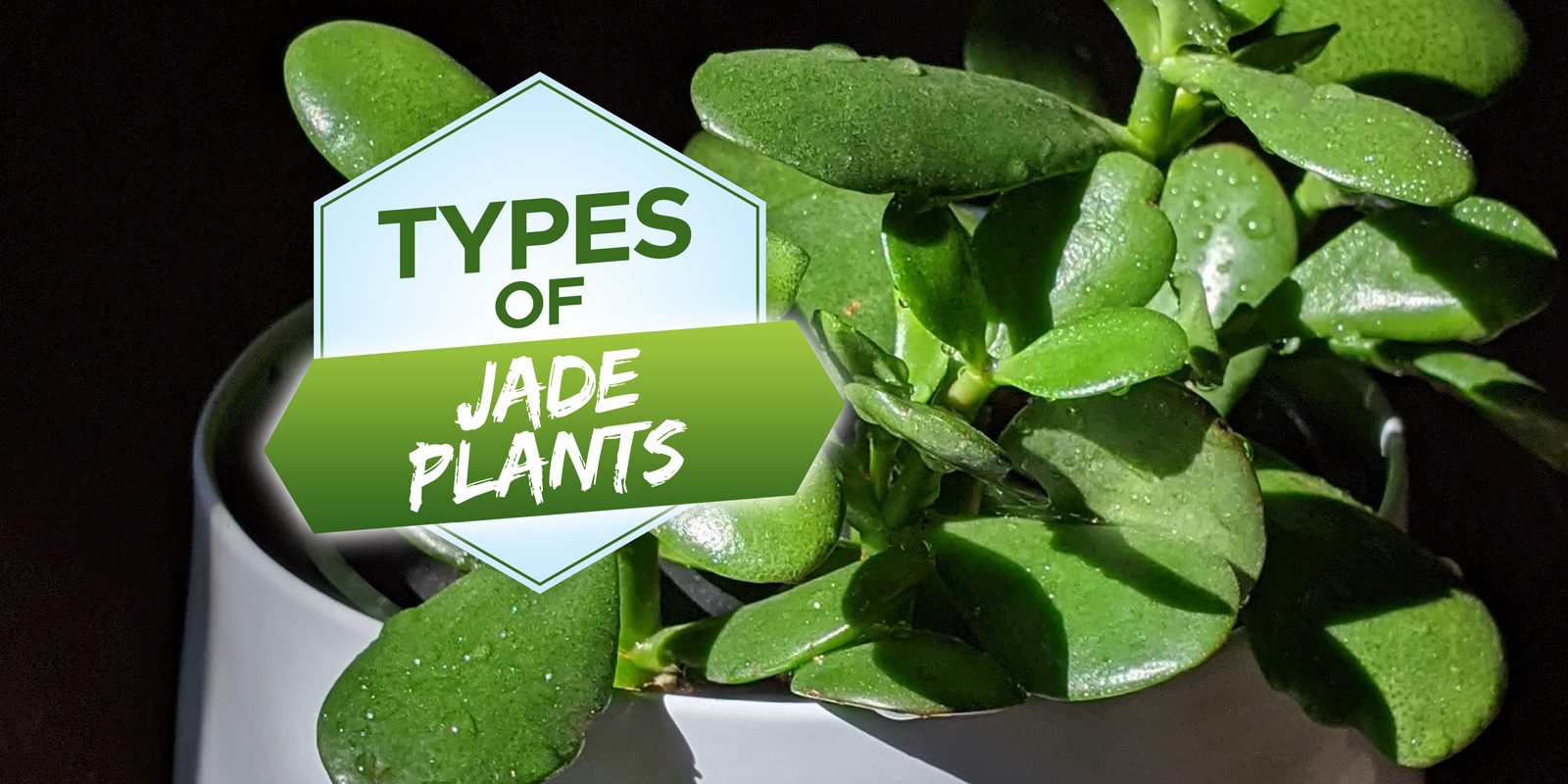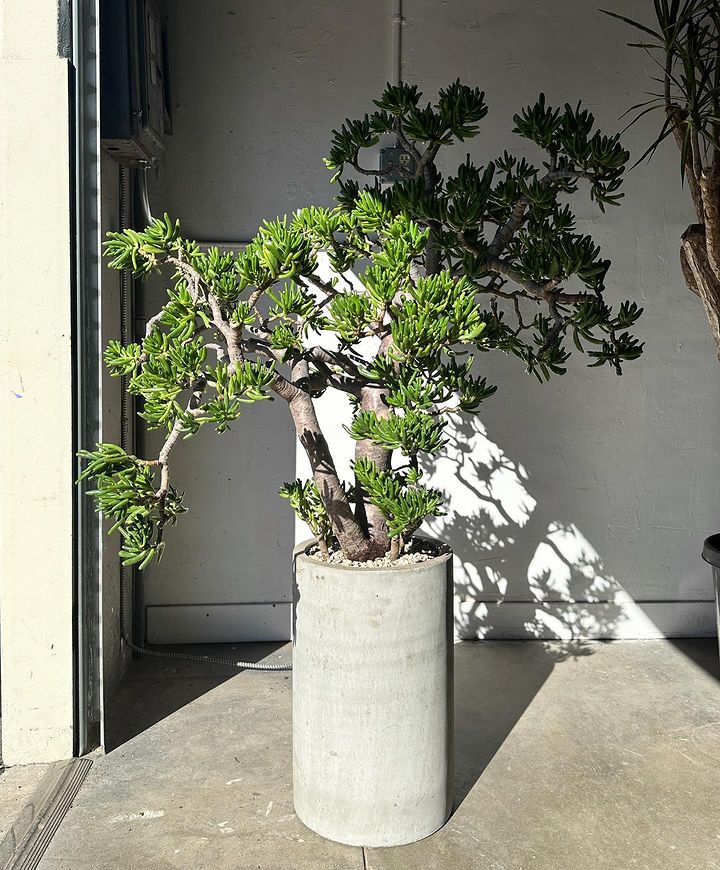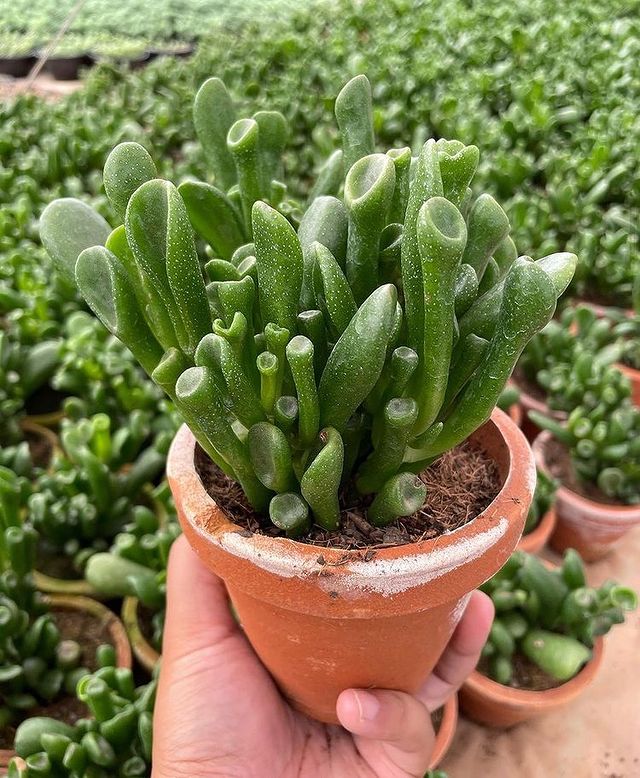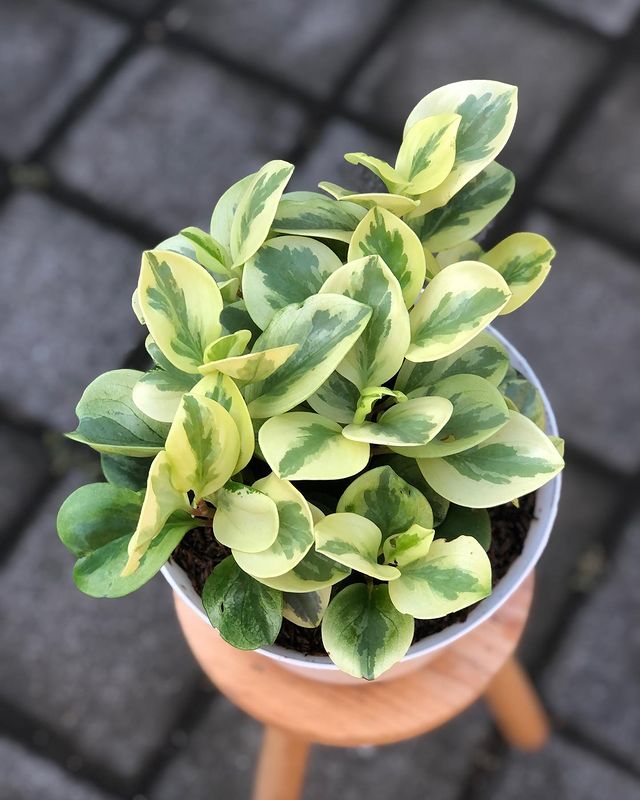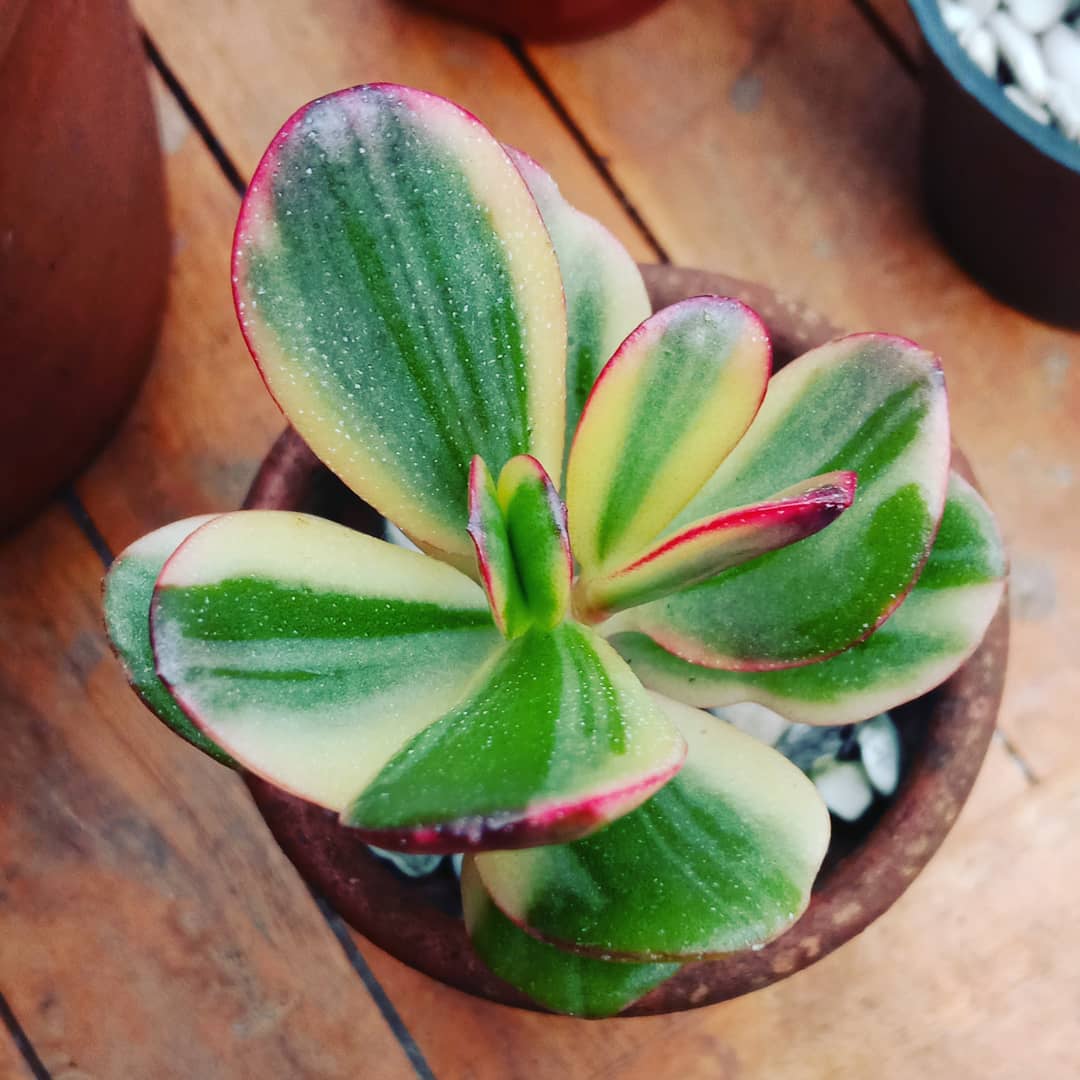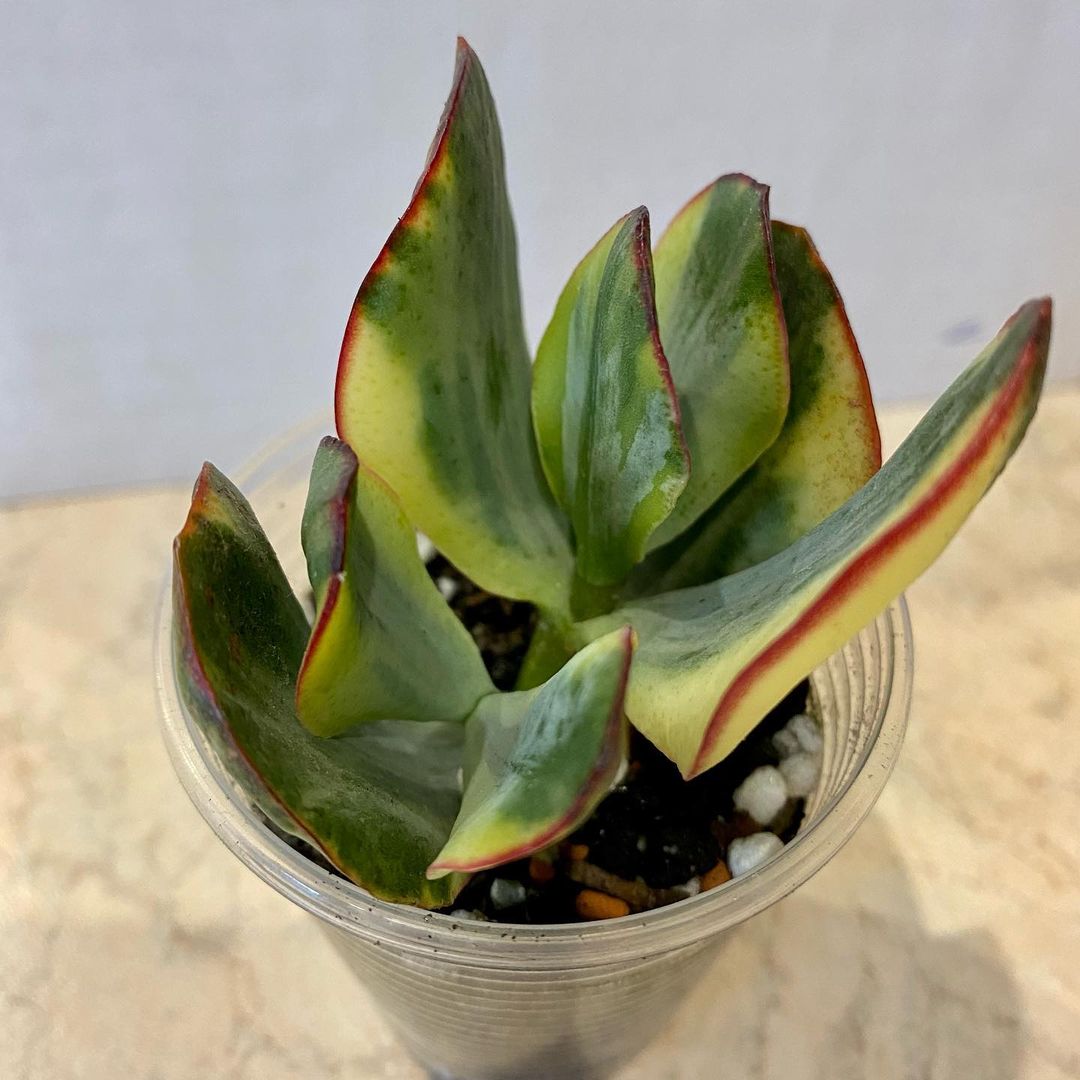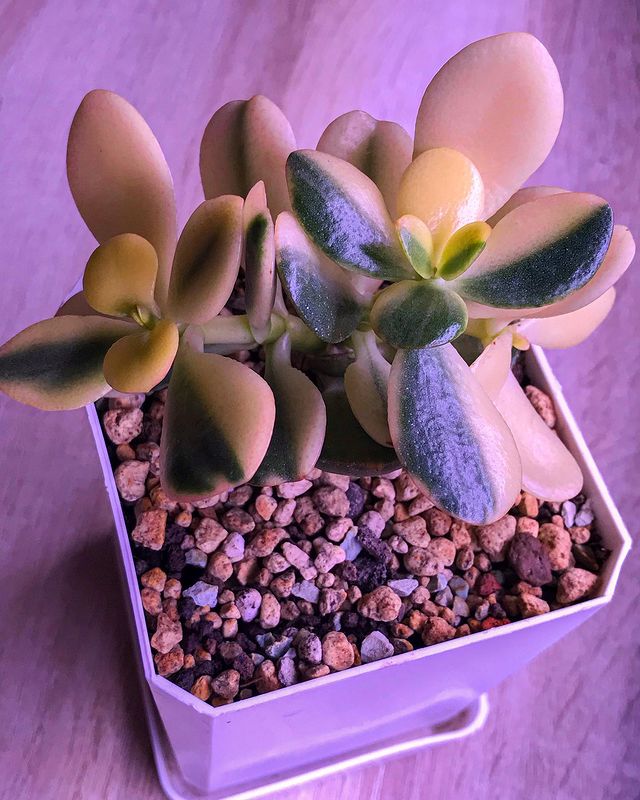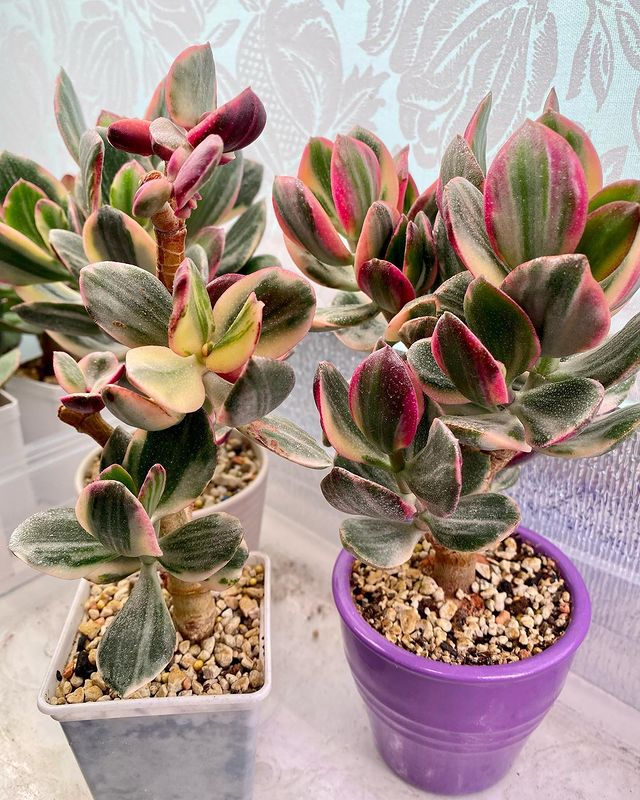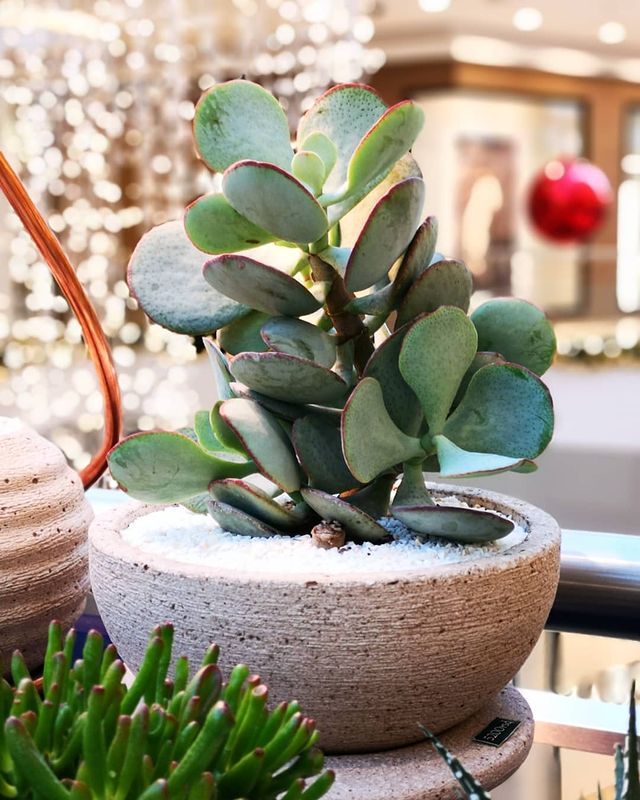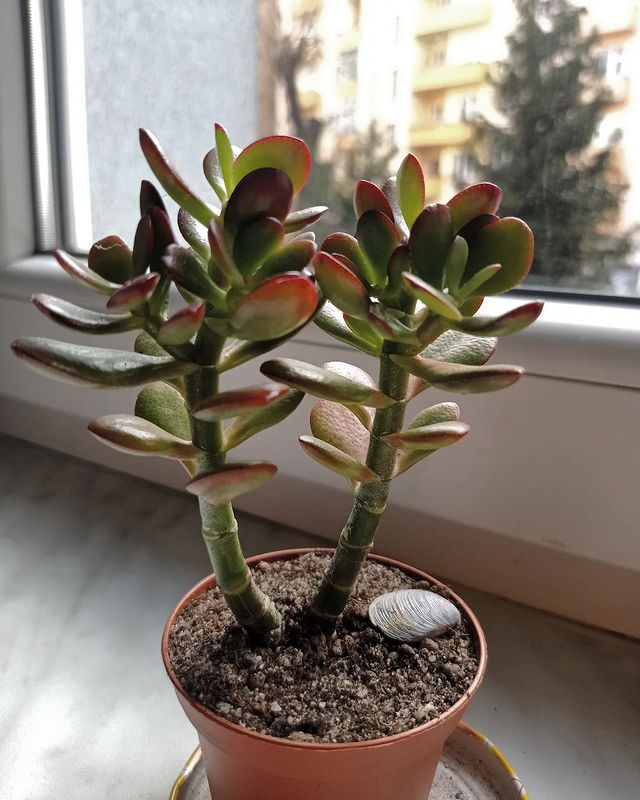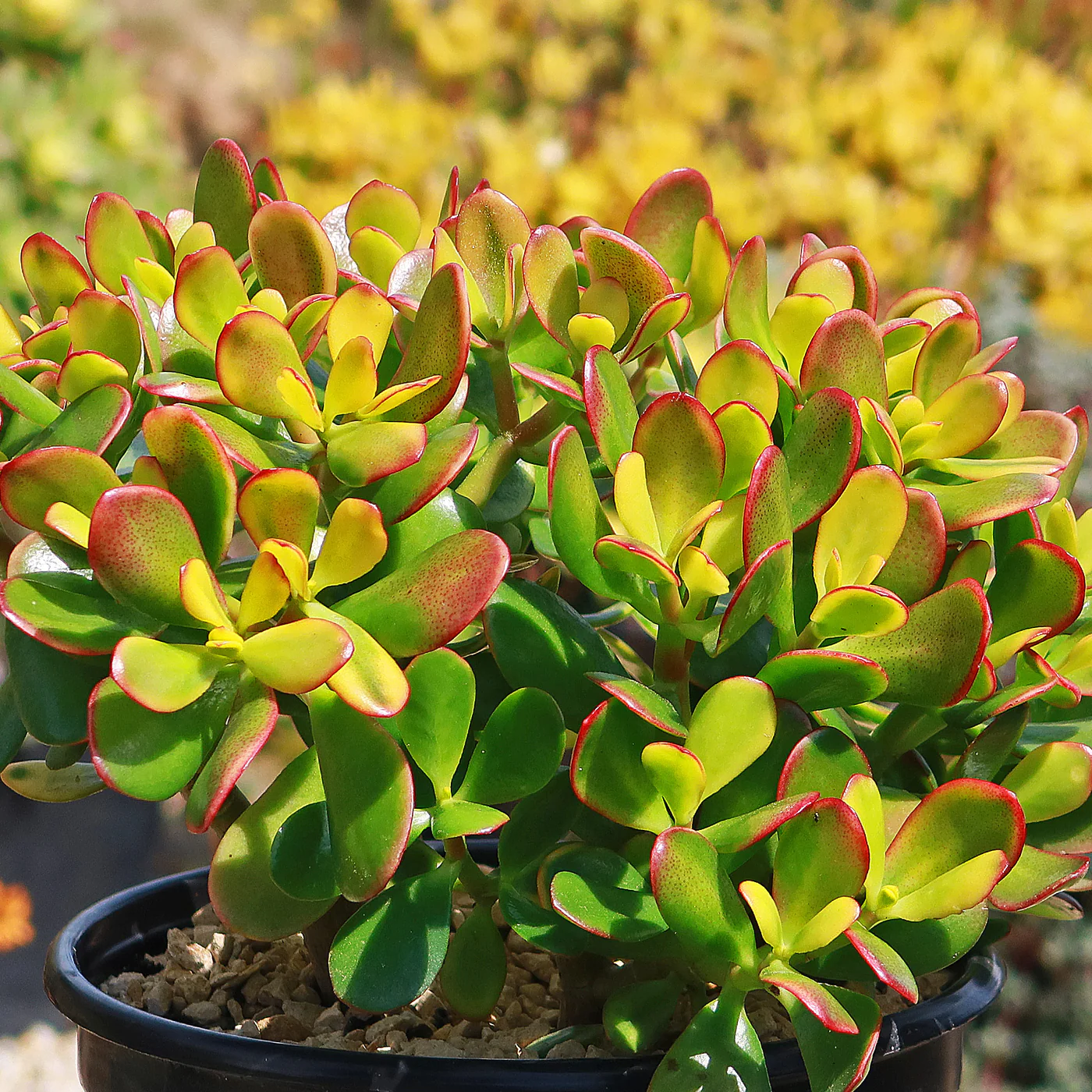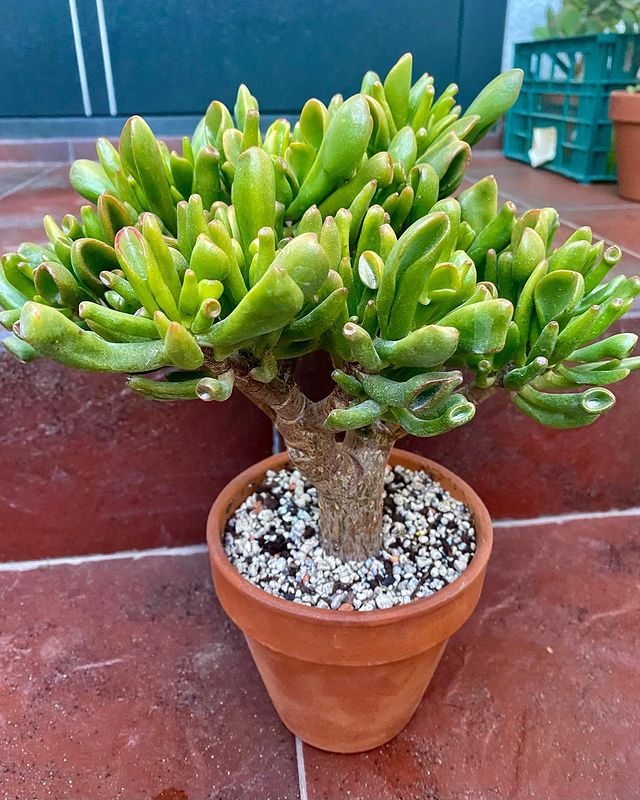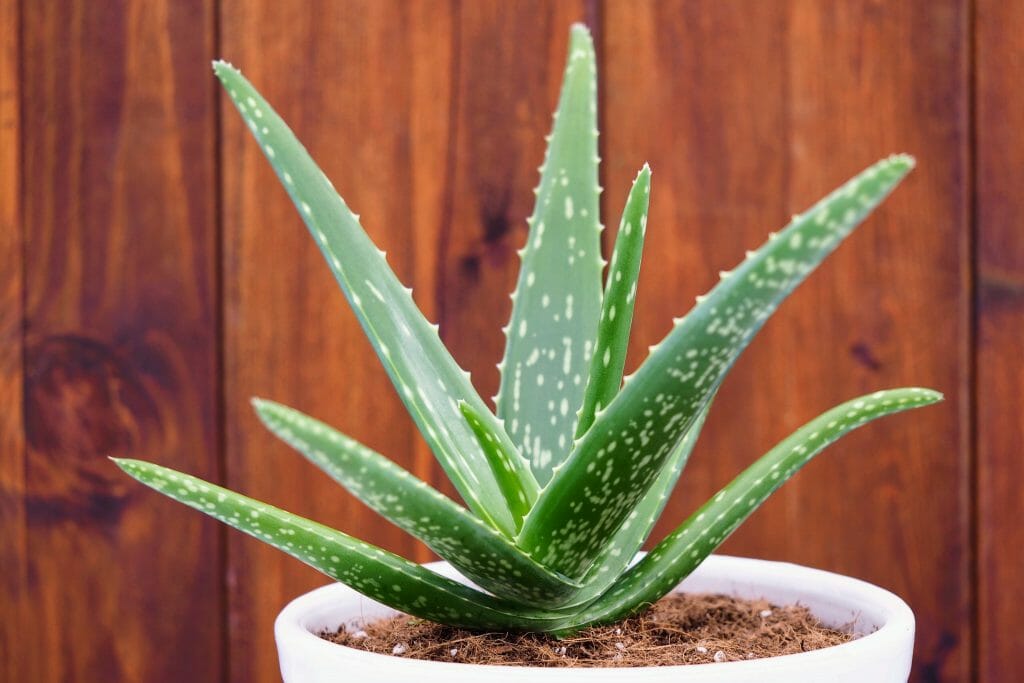Jade plants are some of the most popular succulents grown in homes and gardens around the world. These plants are known for their thick, fleshy leaves and their ability to thrive in a wide range of conditions.
There are many different types of jade plants, each with its unique characteristics and care requirements.
One of the most common types of jade plant is the Crassula ovata, also known as the money plant or lucky plant. This plant has green oval-shaped leaves with a hint of red or yellow on the edges. It is believed to bring good luck and prosperity to those who keep it in their homes.
Another popular type of jade plant is the Crassula argentea, also known as the silver jade plant. This plant has silver-green leaves that are shaped like spoons and can grow up to 3 feet tall.
If you like Jade Plants, you’re in for a treat!
By the end of this article, you’ll have a better understanding of these fascinating plants and be ready to start growing them yourself.
Types of Jade Plant: 17 Stunning Types!
Jade plants are a popular houseplant that comes in a variety of shapes, sizes, and colors. In this section, I will cover some of the most popular jade plant varieties.
Crassula Ovata ‘Classic’
The Crassula ovata ‘Classic,’ commonly known as the Jade Plant, is a popular and captivating succulent that has earned its place as a beloved houseplant among gardening enthusiasts.
With its distinctive appearance and low-maintenance requirements, the Jade Plant is an ideal addition to any indoor garden or collection.
- Appearance: The Crassula ovata ‘Classic’ is characterized by its thick, fleshy leaves, which are oval-shaped and resemble the shape of a jade gemstone. The leaves are typically a rich, deep green color, although they can vary slightly depending on the growing conditions.
- Size: These plants are known for their ability to grow into small trees, with mature specimens reaching heights of up to three feet. They develop a tree-like appearance with a woody stem that becomes more prominent as they age.
- Flowers: While the primary attraction is its foliage, the Jade Plant can also produce clusters of small, star-shaped pink or white flowers under the right conditions. However, blooming is relatively rare when grown indoors.
- Drought Tolerance: Crassula ovata ‘Classic’ is renowned for its resilience and drought tolerance. Its succulent leaves store water, allowing the plant to thrive in dry conditions.
- Lifespan: When cared for properly, Jade Plants can have an impressively long lifespan, often living for decades or even longer.
Crassula ovata ‘Gollum’
Crassula ovata ‘Gollum,’ commonly known as the Gollum Jade Plant or Hobbit Jade Plant, is a captivating and unique succulent that has gained popularity among plant enthusiasts for its intriguing appearance.
This remarkable variety of the classic Jade Plant hails from South Africa and showcases distinctive features that set it apart.
The Crassula ovata ‘Gollum’ can add a touch of whimsy and charm to any garden or collection.
- Leaves: The most distinguishing feature of Crassula ovata ‘Gollum’ is its unusual, tubular leaves with a reddish tint at the tips. These leaves have a unique shape resembling the fingers of the mythical character Gollum from J.R.R. Tolkien’s “The Lord of the Rings.”
- Size: Gollum Jade Plants typically grow up to 2 feet in height, forming a compact, shrub-like structure.
- Flowers: While less prominent than its foliage, this succulent can produce small, star-shaped white or pink flowers during the blooming season, typically in late winter or early spring.
- Drought Tolerance: Similar to other Jade Plants, Crassula ovata ‘Gollum’ is remarkably drought-tolerant due to its succulent nature, storing water in its leaves.
- Lifespan: When cared for properly, Gollum Jade Plants can live for many years, making them a cherished addition to your plant collection.
Crassula ovata ‘Hobbit’
Crassula ovata ‘Hobbit,’ also known as the Hobbit Jade Plant, is a captivating succulent variety that has gained popularity for its distinctive and whimsical appearance.
This unique Jade Plant cultivar showcases fascinating features that set it apart from its counterparts.
Whether you choose to cultivate it indoors or outdoors, the Crassula ovata ‘Hobbit’ can add character and charm to your garden or plant collection.
- Leaves: The most remarkable feature of Crassula ovata ‘Hobbit’ is its unusual, tubular, and finger-like leaves. These leaves have a reddish tint at the tips, giving them an appearance reminiscent of the fictional Hobbit characters from J.R.R. Tolkien’s works.
- Size: Hobbit Jade Plants typically grow to a height of up to 2 feet, forming a compact, shrub-like structure.
- Flowers: While the foliage is the primary attraction, this succulent can produce small, star-shaped white or pink flowers during the blooming season, which typically occurs in late winter or early spring.
- Drought Tolerance: Similar to other Jade Plants, Crassula ovata ‘Hobbit’ is highly drought-tolerant due to its succulent nature, allowing it to store water in its leaves.
- Lifespan: With proper care, Hobbit Jade Plants can have a long lifespan, making them a cherished addition to your plant collection.
Crassula ovata ‘Variegata’
Crassula ovata ‘Variegata,’ often referred to as the Variegated Jade Plant or Variegated Money Plant, is a striking succulent variety renowned for its eye-catching foliage.
- Leaves: The most prominent feature of Crassula ovata ‘Variegata’ is its stunning variegated foliage. The leaves exhibit a combination of creamy-white and green coloring, creating a marbled or striped effect. This variegation sets it apart from the typical solid green Jade Plant.
- Size: Variegated Jade Plants typically reach a height of up to 3 feet, forming a compact, shrub-like structure.
- Flowers: While the variegated leaves steal the spotlight, this succulent can produce small, star-shaped white or pink flowers during the blooming season, which usually occurs in late winter or early spring.
- Drought Tolerance: Like other Jade Plants, Crassula ovata ‘Variegata’ is highly drought-tolerant due to its succulent nature, allowing it to store water in its leaves.
- Lifespan: With proper care, Variegated Jade Plants can have a long lifespan, becoming a cherished addition to your plant collection.
Crassula ovata ‘Sunset’
The most distinctive feature of the Sunset Jade is its leaves. They are thick, fleshy, and oval-shaped, similar to other Jade Plants, but what sets them apart is their coloration. The leaves are a deep, glossy green with yellow and red edges that intensify under bright sunlight, giving the plant a fiery, sunset-like appearance.
This colorful display adds a warm and decorative element to any setting.
In addition to its beauty, the Crassula ovata ‘Sunset’ is also prized for its resilience and adaptability. It can thrive in a variety of conditions, although it prefers bright light and well-draining soil.
It’s relatively low-maintenance, requiring minimal water and care, making it an ideal plant for those with busy lifestyles or less experience in gardening.
- Leaves: The most outstanding feature of Crassula ovata ‘Sunset’ is its striking foliage. The leaves display a gradient of colors, transitioning from green at the base to shades of red, orange, or yellow towards the tips. This colorful display intensifies when the plant receives ample sunlight.
- Size: Sunset Jade Plants typically grow to a height of up to 2 feet, forming a compact, bushy structure.
- Flowers: While the vibrant leaves steal the show, this succulent can produce small, star-shaped white or pink flowers during the blooming season, which usually occurs in late winter or early spring.
- Drought Tolerance: Like other Jade Plants, Crassula ovata ‘Sunset’ is highly drought-tolerant due to its succulent nature, allowing it to store water in its leaves.
- Lifespan: With proper care, Sunset Jade Plants can have a long lifespan, becoming a cherished addition to your plant collection.
Crassula ovata ‘Blue Bird’
Unlike the deep green leaves of traditional Jade Plants, the ‘Blue Bird’ variety boasts a beautiful blue-green hue that sets it apart. The leaves are thick, fleshy, and have a slightly curved shape, which adds to the plant’s sculptural appearance.
When exposed to direct sunlight, the tips of the leaves can develop a soft, reddish tint, providing a lovely contrast against the cooler tones of the foliage.
Crassula ovata ‘Blue Bird’ shares many of the easygoing characteristics of its Jade Plant relatives. It prefers bright, indirect light and well-draining soil, making it well-suited for indoor environments where conditions can be controlled.
Like other succulents, it requires minimal watering, thriving on a soak-and-dry method where the soil is allowed to dry out completely between waterings.
- Leaves: The most striking feature of Crassula ovata ‘Blue Bird’ is its bluish-green, powdery-textured leaves. These leaves have a slightly curved shape, giving the plant an intriguing and distinctive appearance.
- Size: Blue Bird Jade Plants typically reach a height of up to 2 feet, forming a compact, bushy structure.
- Flowers: While the foliage takes center stage, this succulent can produce small, star-shaped white or pink flowers during the blooming season, which typically occurs in late winter or early spring.
- Drought Tolerance: Similar to other Jade Plants, Crassula ovata ‘Blue Bird’ is highly drought-tolerant due to its succulent nature, allowing it to store water in its leaves.
- Lifespan: With proper care, Blue Bird Jade Plants can have a long lifespan, becoming a cherished addition to your plant collection.
Crassula ovata ‘Crosby’s Compact’
The Crassula ovata ‘Crosby’s Compact’, often referred to as ‘Crosby’s Compact’ Jade Plant, is a popular dwarf variety of the classic Jade Plant.
This cultivar is particularly admired for its compact size and dense, lush foliage, making it an ideal choice for smaller spaces or as a desktop plant.
Characterized by its smaller, rounded, and glossy green leaves, ‘Crosby’s Compact’ maintains a much more condensed form compared to the standard Crassula ovata. The leaves are thick and fleshy, storing water and making the plant well-suited to semi-arid conditions.
When exposed to sufficient sunlight, the edges of the leaves can take on a beautiful reddish tinge, adding a subtle color contrast to the plant’s overall appearance.
- Size: The most defining feature of Crassula ovata ‘Crosby’s Compact’ is its diminutive size. It forms a small, tight cluster of thick, fleshy leaves, making it an ideal choice for limited space or as a tabletop plant.
- Leaves: The leaves are oval-shaped and glossy green, similar to the typical Jade Plant. However, they remain smaller and more densely packed on the stems.
- Flowers: Like other Jade Plants, Crosby’s Compact can produce small, star-shaped white or pink flowers during the blooming season, which generally occurs in late winter or early spring.
- Drought Tolerance: Crassula ovata ‘Crosby’s Compact’ shares the drought tolerance of other Jade Plants, thanks to its succulent nature, which allows it to store water in its leaves.
- Lifespan: With proper care, Crosby’s Compact Jade Plants can have a long lifespan, gracing your space with their unique charm.
Crassula ovata ‘Tricolor’
The Crassula ovata ‘Tricolor’, commonly known as the ‘Tricolor’ Jade Plant or Variegated Jade, is a stunning cultivar of the traditional Jade Plant.
It is highly sought after for its distinctive, multi-colored leaves and is a favorite among plant enthusiasts looking to add a splash of color to their collection.
The ‘Tricolor’ Jade is most notable for its beautiful foliage. Each leaf is a blend of green, white, and pinkish-red hues, creating a delightful tricolor effect. The leaves are thick, fleshy, and slightly curved, typical of succulents, allowing them to retain water efficiently.
The variegation in the leaves is more pronounced when the plant is exposed to bright light, which can also intensify the pink to red coloring on the leaf margins, adding to its striking appearance.
- Leaves: The most prominent feature of Crassula ovata ‘Tricolor’ is its vibrant, multicolored foliage. The leaves display a captivating combination of creamy-white, green, and shades of pink or red. This variegation creates a visually stunning and unique appearance.
- Size: Tricolor Jade Plants typically reach a height of up to 2 feet, forming a compact, bushy structure.
- Flowers: While the striking leaves take center stage, this succulent can produce small, star-shaped white or pink flowers during the blooming season, which usually occurs in late winter or early spring.
- Drought Tolerance: Like other Jade Plants, Crassula ovata ‘Tricolor’ is highly drought-tolerant due to its succulent nature, allowing it to store water in its leaves.
- Lifespan: With proper care, Tricolor Jade Plants can have a long lifespan, becoming a cherished addition to your plant collection.
Crassula ovata ‘Silver Dollar’
The ‘Silver Dollar’ Jade features thick, rounded leaves that are a soft, silvery-green color, giving the plant a serene and elegant appearance. The leaves are plump and fleshy, typical of succulents, which allows them to store water and make the plant highly drought-resistant.
When exposed to the right amount of sunlight, the edges of the leaves can develop a gentle pink or red hue, creating a subtle yet beautiful contrast with the silver tones.
In terms of care, the Crassula ovata ‘Silver Dollar’ shares many characteristics with other Jade Plants. It prefers a bright environment with indirect sunlight and requires well-draining soil to thrive.
Watering should be done sparingly, allowing the soil to dry out completely between waterings to prevent root rot and other water-related issues. Its low-maintenance nature and striking appearance make it a popular choice for both experienced gardeners and those new to plant care.
- Leaves: The most remarkable feature of Crassula ovata ‘Silver Dollar’ is its circular and silver-blue, coin-shaped leaves. These leaves are flat and almost perfectly round, resembling silver dollars, hence the name.
- Size: Silver Dollar Jade Plants typically grow to a height of up to 2 feet, forming a compact and bushy structure.
- Flowers: While the distinctive leaves are the primary attraction, this succulent can produce small, star-shaped white or pink flowers during the blooming season, which usually occurs in late winter or early spring.
- Drought Tolerance: Like other Jade Plants, Crassula ovata ‘Silver Dollar’ is highly drought-tolerant due to its succulent nature, which enables it to store water in its leaves.
- Lifespan: With proper care, Silver Dollar Jade Plants can have a long lifespan, becoming a cherished addition to your plant collection.
Crassula ovata ‘Harbour Lights’
The ‘Harbour Lights’ Jade is distinguished by its glossy, fleshy leaves that are a deep green under normal circumstances.
However, with adequate exposure to sunlight, especially during cooler temperatures, the leaves can take on a brilliant red or burgundy hue, making it look as if the plant is alight with a warm, glowing color.
This striking transformation is where the plant gets its name, resembling the welcoming lights of a harbor.
- Leaves: The most outstanding feature of Crassula ovata ‘Harbour Lights’ is its variegated foliage. The leaves display a mesmerizing blend of creamy-white, green, and shades of pink or red. This variegation creates a visually stunning and unique appearance.
- Size: Harbour Lights Jade Plants typically grow to a height of up to 2 feet, forming a compact, bushy structure.
- Flowers: While the striking leaves take center stage, this succulent can produce small, star-shaped white or pink flowers during the blooming season, which usually occurs in late winter or early spring.
- Drought Tolerance: Like other Jade Plants, Crassula ovata ‘Harbour Lights’ is highly drought-tolerant due to its succulent nature, allowing it to store water in its leaves.
- Lifespan: With proper care, Harbour Lights Jade Plants can have a long lifespan, becoming a cherished addition to your plant collection.
Crassula ovata ‘Pink Beauty’
The Crassula ovata ‘Pink Beauty’, commonly known as the ‘Pink Beauty’ Jade Plant, is a delightful and charming cultivar of the traditional Jade Plant.
It’s particularly admired for its soft, pinkish hues that emerge under the right conditions, adding a touch of delicate color to its surroundings.
‘Pink Beauty’ is characterized by its glossy, plump leaves that retain the classic oval shape of the Crassula family. The leaves are primarily a rich green, but with proper sunlight exposure, they develop beautiful pink edges that enhance the plant’s overall attractiveness.
This pink tint can become more pronounced when the plant is mildly stressed, such as when exposed to cooler temperatures or bright light.
- Leaves: The most captivating feature of Crassula ovata ‘Pink Beauty’ is its lovely pink-tinged foliage. The leaves are oval-shaped and exhibit shades of green with delicate pink edges, adding a touch of softness and charm to its appearance.
- Size: Pink Beauty Jade Plants typically reach a height of up to 2 feet, forming a compact and bushy structure.
- Flowers: While the alluring leaves are a focal point, this succulent can produce small, star-shaped white or pink flowers during the blooming season, which usually occurs in late winter or early spring.
- Drought Tolerance: Like other Jade Plants, Crassula ovata ‘Pink Beauty’ is highly drought-tolerant due to its succulent nature, allowing it to store water in its leaves.
- Lifespan: With proper care, Pink Beauty Jade Plants can have a long lifespan, becoming a cherished addition to your plant collection.
Crassula ovata ‘Monstruosa’
The leaves of ‘Monstruosa’ are its most distinctive feature. They are elongated, tubular, and often have a reddish tinge at the tips, especially when exposed to ample sunlight. The green color of the leaves is a deep, vibrant hue, and the quirky shape gives the plant a whimsical, almost otherworldly look.
This unusual morphology not only adds an element of interest but also sparks conversation among plant enthusiasts and visitors.
- Leaves: The most striking and distinctive feature of Crassula ovata ‘Monstruosa’ is its unusual tubular leaves with curled, elongated tips. These leaves have a unique appearance reminiscent of fingers, adding a touch of whimsy to your plant collection.
- Size: Monstrous Jade Plants typically grow to a height of up to 3 feet, forming a compact, shrub-like structure.
- Flowers: While the intriguing leaves are a focal point, this succulent can produce small, star-shaped pink or white flowers during the blooming season, which generally occurs in late winter to early spring.
- Drought Tolerance: Like other Jade Plants, Crassula ovata ‘Monstruosa’ is highly drought-tolerant due to its succulent nature, allowing it to store water in its leaves.
- Lifespan: With proper care, Monstrous Jade Plants can have a long lifespan, becoming a cherished addition to your plant collection.
Crassula ovata ‘Minima’
The ‘Minima’ Jade stands out with its tiny, rounded, and glossy green leaves that closely mimic the appearance of its larger Crassula relatives but on a much smaller scale. The leaves are thick and fleshy, typical of succulents, allowing them to store water efficiently.
When exposed to bright sunlight, the leaf tips can develop a lovely reddish hue, adding a subtle contrast to the plant’s overall green palette.
- Size: The most defining feature of Crassula ovata ‘Minima’ is its diminutive size. It forms a petite, bushy cluster of thick, fleshy leaves, making it an ideal choice for small gardens, tabletops, or indoor spaces.
- Leaves: The leaves are oval-shaped and glossy green, resembling the typical Jade Plant. However, they remain small and densely packed on the stems.
- Flowers: Like other Jade Plants, Miniature Jade Plants can produce small, star-shaped white or pink flowers during the blooming season, which generally occurs in late winter or early spring.
- Drought Tolerance: Crassula ovata ‘Minima’ shares the drought tolerance of other Jade Plants, thanks to its succulent nature, which allows it to store water in its leaves.
- Lifespan: With proper care, Miniature Jade Plants can have a long lifespan, becoming a cherished addition to your plant collection.
Crassula ovata ‘Undulata’
The ‘Undulata’ Jade Plant features the classic thick, fleshy leaves associated with Crassula ovata but with an intriguing twist. The edges of the leaves are wavy or undulated, giving the plant a dynamic and somewhat whimsical look.
The leaves are a deep, glossy green, and under the right lighting conditions, they can develop beautiful red or purple edges, enhancing the plant’s ornamental appeal.
- Leaves: The most outstanding feature of Crassula ovata ‘Undulata’ is its wavy or rippled foliage. The leaves have a unique undulating texture, creating a striking visual effect. The coloring is typically green, with some variations, and the waves give it an artistic appearance.
- Size: Ripple Jade Plants typically reach a height of up to 3 feet, forming a compact and bushy structure.
- Flowers: While the distinctive leaves are a focal point, this succulent can produce small, star-shaped white or pink flowers during the blooming season, which usually occurs in late winter or early spring.
- Drought Tolerance: Like other Jade Plants, Crassula ovata ‘Undulata’ is highly drought-tolerant due to its succulent nature, allowing it to store water in its leaves.
- Lifespan: With proper care, Ripple Jade Plants can have a long lifespan, becoming a cherished addition to your plant collection.
Crassula ovata ‘Botany Bay’
The ‘Botany Bay’ Jade is characterized by its dense, compact growth and shiny, round leaves that are smaller and more circular than those of the traditional Crassula ovata. The leaves are a rich, dark green and have a distinctive glossy finish that catches the light beautifully.
Under the right conditions, particularly with exposure to cool temperatures or bright sunlight, the leaf edges can develop a charming red or purple hue, adding a delightful pop of color to the plant’s overall greenery.
- Leaves: The most remarkable feature of Crassula ovata ‘Botany Bay’ is its striking, elongated leaves that are edged with red. The leaves are flat and narrow, providing an eye-catching contrast of colors and shapes.
- Size: Botany Bay Jade Plants typically reach a height of up to 3 feet, forming a compact and bushy structure.
- Flowers: While the foliage takes center stage, this succulent can produce small, star-shaped white or pink flowers during the blooming season, which usually occurs in late winter or early spring.
- Drought Tolerance: Like other Jade Plants, Crassula ovata ‘Botany Bay’ is highly drought-tolerant due to its succulent nature, allowing it to store water in its leaves.
- Lifespan: With proper care, Botany Bay Jade Plants can have a long lifespan, becoming a cherished addition to your plant collection.
Crassula ovata ‘Lemon & Lime’
The ‘Lemon & Lime’ Jade Plant features striking leaves that are a blend of creamy yellow and green, resembling the citrusy tones of lemon and lime. The leaves are thick, fleshy, and oval-shaped, typical of the Crassula family, but with a variegated twist.
The contrast between the bright yellow and green gives the plant a lively and refreshing look, making it a standout among other succulents.
- Leaves: The most outstanding feature of Crassula ovata ‘Lemon & Lime’ is its eye-catching foliage. The leaves showcase a delightful blend of lemon-yellow and lime-green colors, creating a lively and vibrant appearance.
- Size: Lemon & Lime Jade Plants typically reach a height of up to 2 feet, forming a compact and bushy structure.
- Flowers: While the colorful leaves steal the spotlight, this succulent can produce small, star-shaped white or pink flowers during the blooming season, which usually occurs in late winter or early spring.
- Drought Tolerance: Like other Jade Plants, Crassula ovata ‘Lemon & Lime’ is highly drought-tolerant due to its succulent nature, allowing it to store water in its leaves.
- Lifespan: With proper care, Lemon & Lime Jade Plants can have a long lifespan, becoming a cherished addition to your plant collection.
Crassula ovata ‘Skinny Fingers’
‘Skinny Fingers’ features slender, finger-like leaves that are green to bluish-green in color. These tubular leaves grow densely around its stem, creating a lush and textured look.
The plant has a somewhat sprawling or cascading growth habit, which makes it particularly well-suited for hanging baskets or as a striking addition to a mixed succulent arrangement where its unique form can be fully appreciated.
- Leaves: The most remarkable feature of Crassula ovata ‘Skinny Fingers’ is its elongated and cylindrical leaves. These leaves have a unique, tubular shape that sets them apart from the typical Jade Plant. They are often a rich green color, providing a striking visual contrast.
- Size: Skinny Fingers Jade Plants typically reach a height of up to 2 feet, forming a slender and upright structure.
- Flowers: While the distinctive leaves are a focal point, this succulent can produce small, star-shaped white or pink flowers during the blooming season, which usually occurs in late winter or early spring.
- Drought Tolerance: Like other Jade Plants, Crassula ovata ‘Skinny Fingers’ is highly drought-tolerant due to its succulent nature, allowing it to store water in its leaves.
- Lifespan: With proper care, Skinny Fingers Jade Plants can have a long lifespan, becoming a cherished addition to your plant collection.
Physical Characteristics
Leaf Shape
Jade plants are succulent plants with thick, fleshy leaves that are typically oval-shaped or spoon-shaped. The edges of the leaves can be smooth or slightly toothed. Some varieties of jade plants have leaves that are more elongated and cylindrical in shape. The leaves of the jade plant are usually shiny and smooth, and they can range in color from dark green to a bluish-green hue.
Plant Size
Jade plants are slow-growing plants that can reach up to 3 feet (0.9 meters) in height. However, most jade plants are smaller and can be grown in small pots. The size of the plant can also depend on the variety of jade plant. Some varieties, such as the dwarf jade plant, are naturally smaller and more compact.
Color Variations
Jade plants can come in a variety of colors, although green is the most common color. Some varieties of jade plants have leaves with a yellow or red tint, while others have variegated leaves with a mix of green and white. The color of the leaves can also change depending on the amount of sunlight the plant receives. Jade plants that are exposed to more sunlight may have leaves that are a darker shade of green.
Care and Maintenance
As a jade plant owner, I understand the importance of proper care and maintenance to ensure that my plant thrives. Here are the key factors to consider when caring for your jade plant:
Watering Requirements
Jade plants are succulents, which means they store water in their leaves. Overwatering can lead to root rot, so it’s important to let the soil dry out completely before watering again. I typically water my jade plant once a week during the summer and reduce watering to once a month during the winter.
Sunlight Needs
Jade plants require bright, indirect sunlight to thrive. Placing your plant in a south-facing or west-facing window can provide ample sunlight. However, be careful not to expose your plant to direct sunlight for extended periods, as this can scorch the leaves.
Soil Preferences
Jade plants prefer well-draining soil that is slightly acidic. A succulent potting mix can provide the necessary drainage and nutrients for your plant. When repotting, make sure to choose a pot with drainage holes to prevent water from pooling at the bottom.
Follow these easy steps and your jade plant will absolutely thrive! Thank you for reading!

